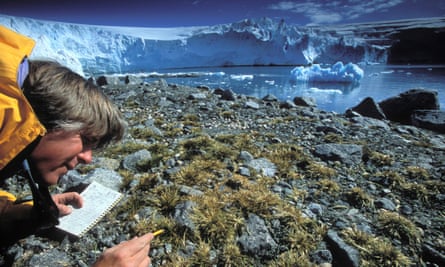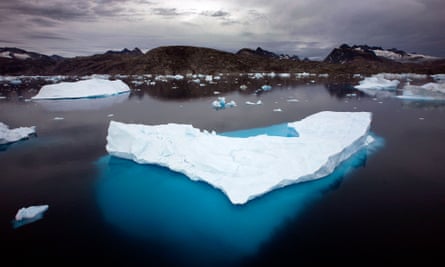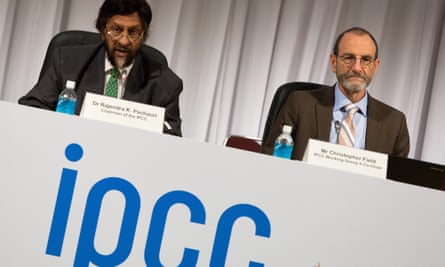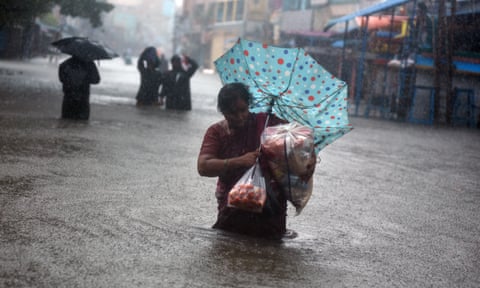We were warned. From the “certainty” of rising greenhouse gas emissions in 1992 to “widespread” and “unprecedented” impacts on humanity by 2014, the UN’s Intergovernmental Panel on Climate Change (IPCC) has been the beacon of climate science for the world.
There were earlier warnings. Even oil giants such as ExxonMobil made predictions in the 1970s and 1980s for global heating that proved “breathtakingly” accurate – before embarking on decades of damaging denial.
But the power of the IPCC is that thousands of the world’s best scientists work together to distil the latest global research into reports that are then signed off by all the governments in the world. These are the gold-standard statements on the reality and dangers of climate change and, arguably, the greatest scientific endeavour in history.
1992: first IPCC report

“We are certain of the following: emissions resulting from human activities are substantially increasing the atmospheric concentrations of the greenhouse gases. These increases will result on average in an additional warming of the Earth’s surface.” From the very first IPCC summary report in 1992, the reality of global heating is made clear.
The report predicted a global temperature rise of about 2C by 2025, compared with the period before the industrial revolution sparked the mass burning of fossil fuels. In 2023, the rise is 1.4C.
However, the report said: “The size of the warming over the last century is broadly consistent with the prediction by climate models, but is also of the same magnitude as natural climate variability. The unequivocal detection of the [human-]enhanced greenhouse effect from observations is not likely for a decade or more.”
Nonetheless, the first IPCC reports led to the creation of the UN Framework Convention on Climate Change, the annual UN summit where nations negotiate climate action.
1995: second IPCC report

By 1995, the second IPCC report had started to point the finger firmly at human-caused emissions for rising global temperatures: “Global mean surface temperature has increased by between about 0.3 and 0.6C since the late 19th century. The balance of evidence suggests a discernible human influence on global climate.”
The report also made plain that global heating was a serious danger to the world: “Climate change is likely to have wide-ranging and mostly adverse impacts on human health, with significant loss of life.”
“During the past few decades … potentially serious changes have been identified, including an increase in some regions in the incidence of extreme high-temperature events, floods and droughts,” it said.
The report made a plea, that was to be ignored: “Where there is a lack of full scientific certainty, [countries] should: ‘take precautionary measures to anticipate, prevent or minimise the causes of climate change and mitigate its adverse effects’.”
The then UK environment minister, John Gummer (now Lord Deben), said at the time: “There will be far-reaching effects on natural systems and human society for generations to come.”
2001: third IPCC report
“There is new and stronger evidence that most of the warming observed over the last 50 years is attributable to human activities,” the third IPCC report in 2001 found. “Detection and attribution studies consistently find evidence for an anthropogenic signal in the climate record of the last 35 to 50 years.” In terms of the cause of global heating, humanity was in the dock.

The third report also indicated that global heating was already wreaking harm: “The rising socioeconomic costs related to weather damage and to regional variations in climate suggest increasing vulnerability to climate change.”
It sounded the alarm that those least responsible for emissions would suffer the most: “The impacts of climate change will fall disproportionately upon developing countries and the poor persons within all countries.”
The report also warned of triggering climate tipping points. “Greenhouse gas forcing in the 21st century could set in motion large-scale, high-impact, non-linear and potentially abrupt changes in physical and biological systems over the coming decades to millennia.” By 2022, scientists had concluded that five dangerous tipping points may already have been passed.
“The report has starkly confirmed the threat posed by global warming – the stakes are high for us, and for our planet,” said the then foreign minister for the United Arab Emirates, which has continued to be a major oil producer and will host the latest UN climate summit, Cop28, in December.
2007: fourth IPCC report
The fourth IPCC report, in 2007, was the moment when humanity’s responsibility for global heating became all but certain: “Warming of the climate system is unequivocal … Eleven of the last 12 years rank among the 12 warmest years [on] record.”

“Most of the observed increase in global average temperatures since the mid-20th century is very likely due to the observed increase in anthropogenic greenhouse concentrations,” the report said.
Denial was therefore left to those with vested interests, but the report also warned against delay: “Delayed emission reductions significantly constrain the opportunities to achieve lower stabilisation levels and increase the risk of more severe climate change impacts.”
Not acting was the expensive option, the report made clear: “The evidence leads to a simple conclusion: the benefits of strong and early action far outweigh the economic costs of not acting … delay would be dangerous and much more costly”.
Rajendra Pachauri, the IPCC chair, said: “I hope this report will shock people, governments into taking more serious action.” The IPCC and the US vice-president, Al Gore, were jointly awarded the Nobel peace prize in 2007. But the global financial crash that followed diverted the world’s attention.
2014: fifth IPCC report
By the time of the IPCC’s fifth report in 2014, the reality, cause and consequences of global heating were glaringly obvious: “Human influence on the climate system is clear. Recent climate changes have had widespread impacts on human and natural systems [and] many of the observed changes are unprecedented over decades to millennia.”

Global emissions were still inexorably rising and the report said that meant worse was to come: “Continued emissions will cause further warming and long-lasting changes in all components of the climate system, increasing the likelihood of severe, pervasive and irreversible impacts for people and ecosystems.”
By this time, adapting to all the impacts of climate change was no longer an option, the report said: “Adaptation can reduce the risks of climate change impacts, but there are limits to its effectiveness, especially with greater magnitudes and rates of climate change.”
Once again, the IPCC said action was affordable. “It doesn’t cost the world to save the planet,” said economist Prof Ottmar Edenhofer. The IPCC’s fifth report laid the scientific ground for the UN’s Paris agreement in 2015, which for the first time spurred most nations to cut emissions.
2018: special IPCC report on 1.5C

A special IPCC report in 2018 demonstrated stark differences in the impacts of global heating between a rise of 1.5C and 2C, the two targets contained in the Paris agreement. Compared to 1.5C, it showed many millions more people faced extreme heatwaves, droughts and food insecurity with 2C of heating.
Prof Johan Rockström said: “Climate change is occurring earlier and more rapidly than expected. Even at the current level of 1C warming, it is painful. This report is really important. It has a scientific robustness that shows 1.5C is not just a political concession. There is a growing recognition that 2C is dangerous.”
The report also set out the daunting arithmetic of holding the temperature rise to 1.5C: “CO2 emissions [must] decline by about 45% from 2010 levels by 2030.”
In 2022, however, emissions from fossil fuel burning rose yet again to reach a new record high. Humanity may have so far largely ignored the alarm bells sounded by the scientists. But we cannot say we were not warned.
